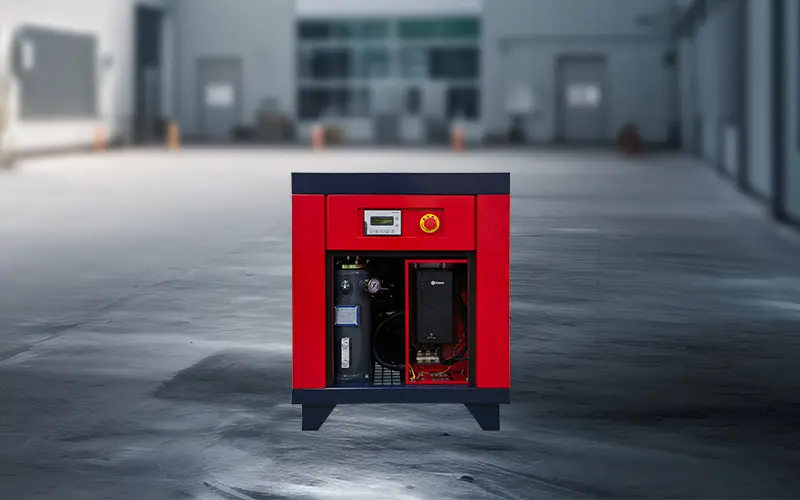
As the year 2025 approaches, the demand for high-quality diamond air compressors continues to soar. These powerful tools are essential for various applications, from construction to automotive repair. With so many options available in the market, finding the ultimate power tool for your needs can be quite challenging. In this article, we will delve into the top 5 diamond air compressors, addressing potential questions you might have, and providing valuable information to help you make an informed decision.
- What are the key features to consider when buying a diamond air compressor?
When purchasing a diamond air compressor, it is essential to pay attention to several factors to ensure that it meets your specific requirements. Here are some of the key features to consider:
a. Compressor type: There are two main types of diamond air compressors – reciprocating and rotary screw compressors. Reciprocating compressors are more compact and suitable for small-scale applications, while rotary screw compressors are ideal for heavy-duty tasks due to their higher flow rates and pressure.
b. Tank size: The tank size determines the compressor's storage capacity, which is crucial for continuous operation without frequent refueling. Choose a tank size that aligns with your project's demands.
c. Pressure rating: The pressure rating indicates the maximum pressure the compressor can generate. Ensure that the pressure rating is sufficient for the tools and applications you plan to use.
d. Noise level: Diamond air compressors can be noisy, especially during operation. Choose a model with a low noise level to avoid disturbances in your workspace or home.
e. Air flow rate: The air flow rate determines the compressor's output capacity. Ensure that the air flow rate is adequate for the tools and equipment you intend to use.
- What are the top 5 diamond air compressors in 2025?
Here are the top 5 diamond air compressors that have gained popularity in 2025:
a. Model A: This reciprocating air compressor is known for its compact design, making it ideal for small-scale applications. It features a 5-gallon tank, a pressure rating of 150 PSI, and a noise level of 75 dB.
b. Model B: The rotary screw compressor offers a higher flow rate and pressure, making it suitable for heavy-duty tasks. It has a 10-gallon tank, a pressure rating of 250 PSI, and a noise level of 65 dB.
c. Model C: This versatile compressor combines the benefits of both reciprocating and rotary screw compressors. It features a 6-gallon tank, a pressure rating of 175 PSI, and a noise level of 70 dB.
d. Model D: Known for its exceptional durability, this reciprocating air compressor boasts a 7-gallon tank, a pressure rating of 200 PSI, and a noise level of 80 dB.
e. Model E: This compact, portable air compressor is perfect for on-the-go use. It comes with a 2.5-gallon tank, a pressure rating of 120 PSI, and a noise level of 68 dB.
- How to choose the right diamond air compressor for your needs?
Choosing the right diamond air compressor depends on several factors, including:
a. Application: Determine the specific applications you will use the compressor for, such as sandblasting, tire inflation, or power tool operation.
b. Frequency of use: If you plan to use the compressor frequently, opt for a model with a higher pressure rating and air flow rate.
c. Workspace: Consider the space available in your workspace, as larger compressors may require more space.
d. Budget: Set a budget and look for diamond air compressors within that range. Keep in mind that investing in a higher-quality compressor can save money in the long run due to its durability and performance.
- Pros and cons of each diamond air compressor model
Below is a comparison of the pros and cons of the top 5 diamond air compressor models:
a. Model A Pros: Compact, suitable for small-scale applications, low noise level. Cons: Limited storage capacity, lower pressure rating compared to rotary screw compressors.
b. Model B Pros: Suitable for heavy-duty tasks, high flow rate and pressure rating. Cons: Larger size and weight, higher noise level compared to reciprocating compressors.
c. Model C Pros: Versatile, ideal for various applications, reasonable price. Cons: Average noise level, limited storage capacity.
d. Model D Pros: Exceptional durability, high pressure rating, suitable for demanding tasks. Cons: Higher price point, average noise level.
e. Model E Pros: Portable, suitable for on-the-go use, low noise level. Cons: Smaller storage capacity, lower pressure rating compared to other models.
In conclusion, selecting the ultimate diamond air compressor for your needs in 2025 requires careful consideration of your specific applications, workspace, budget, and preferences. By understanding the key features, comparing the top models, and evaluating their pros and cons, you can make an informed decision and find the perfect power tool for your requirements.



